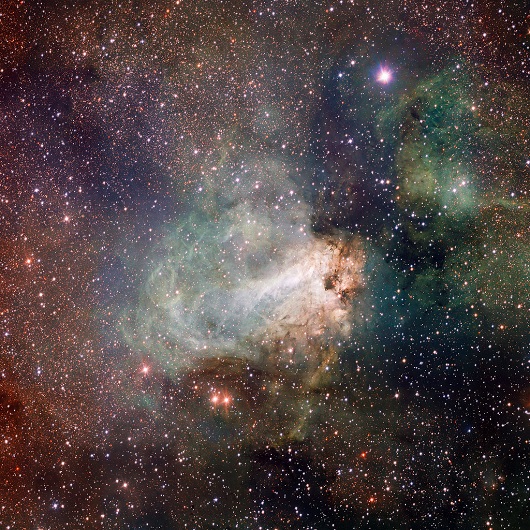The search for Alien life: have we been doing it wrong?

A researcher at the University of St Andrews has made one giant leap closer to “a profound moment for humanity”, with a discovery that could help prove the existence of alien life.
Working alongside colleagues at NASA, University of Washington and UNAM, Mexico, Dr Mark Claire has discovered that signs previously thought to confirm the presence of life on Alien planets, might not be as definitive proof as thought.
Whilst searching for life on other planets, astronomers rely on finding gases – such as oxygen, ozone or methane – in the planet’s atmosphere, as these are thought to be significant signs of the existence of life.
However, the research published this week in The Astrophysical Journal, proves that the existence of one of these alone is not enough to predict the presence of organic life.
Dr Claire, a Research Fellow in the University’s School of Geography and Geosciences, said:
“We set out to discover if the detection of oxygen, ozone, and methane in the atmosphere of an exoplanet around another star, in another solar system, would be a strong indication of life existing on such a planet.
“We simulated thousands of lifeless planetary atmospheres, and found that in some cases, detectable quantities of methane and ozone were produced by chemical reactions in the atmosphere.
“Our work strengthens the belief that the existence of detectable levels of oxygen, ozone and methane together would be a convincing sign of life on another planet. However, the existence of only one of these gases is not, and would result in a ‘false positive’ signal.
“A telescopic mission that can observe over a large wavelength band would be able to distinguish between this ‘false positive’ signal, and genuine signs of life.”
Dr Shawn Domagal-Goldman, of NASA’s Goddard Space Flight Centre, said:
“This [research] has important implications for our future plans to look for life beyond Earth.
“When we ran these calculations, we found that in some cases, there was a significant amount of ozone that built up in the atmosphere, despite there not being any oxygen flowing into the atmosphere.
“We tried really, really hard to make false-positive signals for life, and we did find some, but only for oxygen, ozone, or methane by themselves.
“It’s like college students and pizza. If you see pizza in a room, and there’s also college students in the room, chances are the pizza was freshly delivered, because students will eat the pizza quickly.
“The same goes for methane and oxygen. If both are seen together in an atmosphere, the methane was freshly delivered because the oxygen will be part of a network of reactions that will consume the methane. Therefore, you know the methane is being replenished. The best way to replenish methane in the presence of oxygen is with life.”
The paper is available online here.
ENDS
NOTE TO EDITORS:
Dr Claire is available for interview on [email protected] or on +44 (0)1334 464948.
Issued by the University of St Andrews Press Office.
Contact Elliot Busby on [email protected] or on 01334 462108.
The publisher pdf is also available from the University repository here.
Category Research